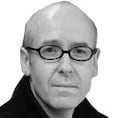Kuniyoshi Aikawa was 12 when he heard the drone of a B-29 US bomber flying over Hiroshima. The atomic bomb it dropped from its payload would kill or injure 160,000 people on August 6th, 1945.
Aikawa survived, only to find himself in Nagasaki three days later, exposed a second time to the greatest destructive forced in history.
Aikawa was with his 14-year-old sister in Hiroshima when “Little Boy” – the code name for the bomb dropped on that city – detonated. His father had been drafted into the army and his mother was away. The flash of white light from the detonation was followed by a blast that lifted him into the air – then he blacked out. “When I came to, our house had been blown apart.”
Hell on earth
Aikawa pulled his sister from the wreckage, then began walking toward the mountains, where they thought they would be safe. The road was “hell on earth”, crowded with walking wounded, he recalls. “I saw three young girls, almost naked. Their eyes, noses and mouths had been burnt off and their skin was hanging off and dragging along the ground.”
Many were beyond help: An injured soldier was holding a baby turned to charcoal. A woman called out for help from under the ruins of her house, but Aikawa was not strong enough to save her. When he later returned from the mountains she had been burned alive, her body twisted in agony as she tried to free herself. He and his sister bowed and said a prayer, then left.
Aikawa decided to take the train back to his mother’s family, who lived in a village near Nagasaki. It was a fateful decision. On August 9th, “Fat Man” was dropped, killing 70,000 people and creating a city where, in the words of its mayor, “not even the sound of insects could be heard”.
The hypocentre
Aikawa had just arrived at Urakami Station, less than a mile from the bomb’s hypocentre. When the clouds parted, Nagasaki was a smoking ruin. “There were so many dead bodies lying on the ground it was difficult to walk.”
Aikawa contracted diarrhoea and a burning fever in his grandparents’ house. Newspaper reports speculated that the city had been poisoned with gas. Persimmon fruit was touted as a remedy. His mother began mashing them and forcing them into his screaming mouth. To this day, Aikawa believes his mum – and the fruit – helped save his life.
Like most survivors, Aikawa dislikes talking about the war. For years, the radiation dose he received was not well understood and people reacted badly when he told them about his past.
"He had this horrific experience, then had to suffer again from discrimination," says Miyako Jyodai, herself a Hiroshima survivor.
Censorship under the American postwar occupation left many in Hiroshima and Nagasaki unaware of what exactly had happened to them until the 1950s. Radiation sickened and killed many, but there was no government help. Thousands of hibakusha (nuclear survivors) were initially used as guinea pigs in experiments, and denied treatment.
For years, the hibakusha were caught between the priorities of the US and Japanese governments, each seeking the other to claim "moral, financial and medical responsibility for the atomic bombings," says author Susan Southard in a new book. As this dispute dragged on, the survivors continued to die from illnesses related to their exposure.
Double hibakusha
The Japanese government finally began to provide health assistance and benefits to
hibakusha
from 1957, a belated recognition of the lifelong physical and psychological scars they endure. Today Aikawa carries a government-issued ID stating he was exposed to radiation in both cities, making him one of a tiny handful of double
hibakusha
.
Now 82 and recovering from stomach cancer in a Nagasaki hospital, Kuniyoshi Aikawa tells friends he is “miserable” that memories of the bombings are fading. Many of the 190,000 survivors are nearing the end of their lives.
The world has moved on; the US alone has 8,000 active or operational warheads, each carrying on average about 20 times the destructive power of Hiroshima.
People shrug their shoulders when Aikawa tells them what occurred 70 years ago. They think it was all so long ago, he says.








